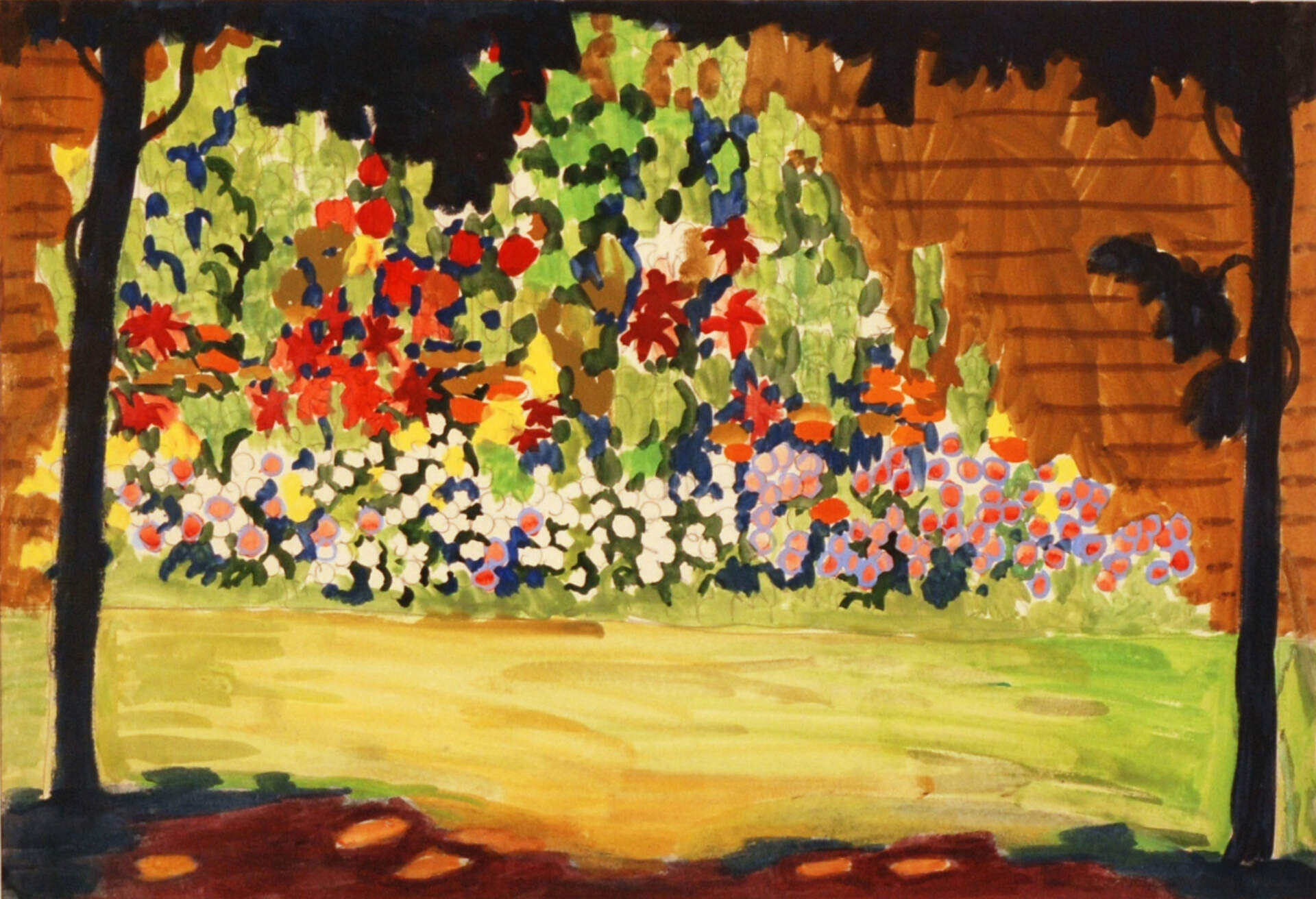
Charles E. Burchfield (1893-1967), Summer Garden, 1916; watercolor on paper, 14 x 20 inches (Frame: 24 x 29 3/4 inches); Gift of Mr. and Mrs. Armand J. Castellani, 1979
Dreaming of Burchfield by Mary Helen Miskuly
Sunday, Jun 9, 2013
Mr. Burchfield can really creep into your subconscious if you work around his paintings long enough or read his writing at any length. Around 2004 I was fortunate enough to work from home transcribing half of his journals. It was a nice segue for me to return to the Center as the registrar, after having left my post in 1997 to have our first child. Burchfield was a daily part of my life then, as he is now, I had a very vivid dream about him…
There was a garden, which was a combination of my garden at the time, and the Burchfield family’s in Salem, OH. I dreamt that he was helping me split perennials, namely, my blue columbine. Big, massive clumps of it. (He was wearing a short sleeved button down shirt, suspenders, pants that were probably wool, black leather work shoes, black socks – not your typical gardening wear of today.) I still remember like it was yesterday how he dragged a big clump of flowers that was sitting on a big shovel so that the shovel was like a wagon. Ironically my favorite way to transport masses of plants in my own garden! I felt very fortunate that he chose to visit me and lend me a hand and some advice.
The next morning, after sorting out the dream and what it could have meant, I got the children out to school and then once back home, settled in to work on my laptop at the table on my patio. As it turned out, I transcribed the following entry and it was the first and only time he referred to columbine flowers in all of the volumes that I transcribed. I subsequently went back through all of the volumes that I worked on and there were no other references to this beautiful flower. Coincidentally, on the calendar it was also the same week of the year as the journal entry.
The following was included in what I transcribed that day from Volume 14.
Wednesday May 27, 1914
Yesterday while standing under our cherry tree, delighting in the breeze, which was cleaning up after a small thundershower, a humming-bird - a delicate mite of a thing dropped down out of the wind and with that remarkable ease of poise and balance, proceeded to sip the honey from the columbine. At once I unconsciously began to philosiphize on the incident. My first thought was - what a delightful life-work was his - to merely sip honey from flowers. And second thought was: were allowed to sip nothing but honey would not its sweetness which we prize, eventually become sour and as gall to us? Coming to my senses however I exclaimed as if in rebuke to my own thought. “But why spoil such a pretty scene with such aimless eulogizing.” And indeed why? What a scene painted - but could it be painted?
I was dumbstruck. The strangest thing was that where my blue columbine was growing in my garden, that was the only place I had ever seen hummingbirds in my yard, right in the crabapple tree above the flowers. I had tons of flowers they could have stopped at, but for some reason they always hovered above that spot where Charlie was telling me to split my flowers. All of my columbine is gone and my children have grown, but I still think of him in that same spot whenever I'm in my yard enjoying the sunshine.
Seven very talented members of our team pair Burchfields word with his images every day of the week and I encourage you to check out In His Own Words https://www.burchfieldpenney.org/general/ceb-in-his-own-words/ and hope that you too, will have dreams of Burchfield.
—Mary Helen Miskuly, Registrar, Burchfield Penney Art Center
Mary Helen Miskuly is the Registrar at the Burchfield Penney Art Center. She is a graduate of Buffalo State College and started at the Burchfield in 1987 as a workstudy student and then as a curatorial intern, having been heavily involved with the first Craft Art ’88 exhibition, now the biennial Art in Craft Media. Mrs. Miskuly was Registrar from 1993-1997 and she returned to the Center in 2004 to transcribe the journals of Charles Burchfield. In 2006 she subsequently worked on an inventory of the collection for the move to the new museum through a three year grant from the Institute of Library and Museum Services (IMLS) An artist herself, she is admirer of Arts & Crafts architecture and design and anything that contains the word bungalow.